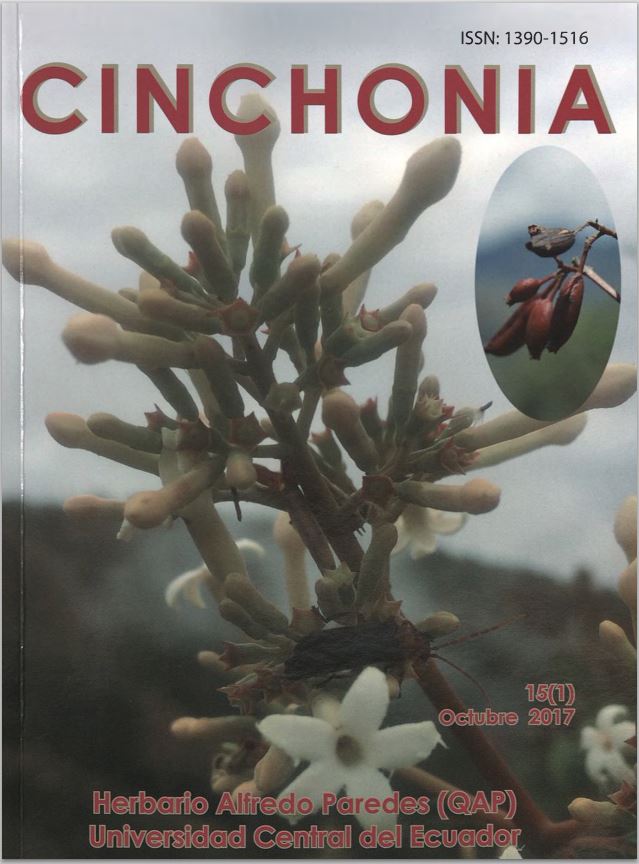La flora del parque Metropolitano Wayrapungo y el cerro Ongüí, Quito DM.
Main Article Content
Abstract
The floristic inventory of green spaces and remaining in the vicinity of the city of Quito is more frequent, as they are tools for good management and conservation of the flora in environmental education, recreation, ecotourism and botanical learning activities. The study area is located in the province of Pichincha, Quito canton, Chilibulo parish, Wayra Pungo fo- 48 rest guard and Ongui mount, coordinates 00°14.39´S - 78°33.18¨W, 3200m, high montane, evergreen forest, vegetable formation. Through five visits in the year 2015, it toured the different paths of the area of study collecting plants the botanical material, as well as the realization of a set of transects (0.1 ha) at Ongui mount, drying and taxonomic determination was performed in the QAP Herbaria and QCNE, transect data was analyzed using Basal Area and the Simpson diversity index. The 242 vascular species were recorded, corresponding to 184 genres and 75 botanical families; according to the habit, corresponds to 9, most abundant are the grasses, followed by bushes, trees, veins and epiphytes; common families are: Asteraceae, followed by Fabaceae, Rosaceae, Solanaceae, Poaceae, Piperaceae and Polypodiaceae; according to status: 199 are native, 30 introduced and 13 endemic, according to the UICN category, 7 are in minor concern, almost 3 threatened and 3 Vulnerable; some endemic are: Geissanthus pichinchae, Kingianthus paniculatus, Manettia pichinchensis, Oreopanax ecuadorensis, Puya glomerifera and Telipogon obovatus; on the set of transects was recorded 330 individuals corresponding to 20 species, the Simpson diversity index is equal to 5.8 interpreted as a diversity under the average, a Basal area total 2.7 m², and the five species more frequently are: O. ecuadorensis, Gynoxys hallii, Myrsine andina, Verbesina arborea and Siphocampylus giganteus. Botanical inventory includes the production of an illustrated guide with all the species recorded in order that it will be useful to the visitors of this green area in the southwest of the city of Quito sector.

